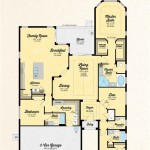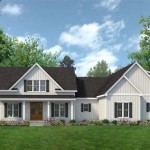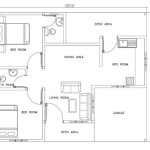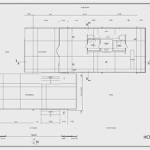Small Homes Floor Plans With Pictures: Optimizing Space and Style
The increasing interest in sustainable living, coupled with rising housing costs, has led to significant demand for small homes. These compact dwellings offer a practical and affordable alternative to larger, more traditional houses. Successful small home design hinges on well-considered floor plans that maximize usable space and provide comfortable living environments. Visual representations, such as floor plans with pictures, are crucial for understanding the layout and visualizing the potential of a small home.
This article delves into the key considerations involved in designing small home floor plans, highlighting various strategies for space optimization and illustrating these principles with examples. Understanding these principles is vital for prospective homeowners, builders, and designers alike to create functional and aesthetically pleasing small living spaces.
Small home design is not merely about downsizing; it requires a shift in perspective. The focus shifts from accumulating square footage to maximizing efficiency and minimizing waste. Every area must serve a purpose, and thoughtful design choices can significantly impact the overall feeling of spaciousness and comfort.
Prioritizing Open-Concept Living
One of the most effective strategies for making a small home feel larger is the implementation of an open-concept floor plan. This typically involves combining the kitchen, dining area, and living room into a single, unified space. By eliminating dividing walls, natural light can flow freely throughout the home, creating a brighter and more inviting atmosphere. This perceived expansion of space is particularly beneficial in smaller dwellings, where every square foot counts.
Open-concept living also encourages social interaction and facilitates easier movement within the home. It's especially well-suited for individuals or couples who enjoy entertaining, as it allows for seamless interaction between different areas of the living space. However, careful consideration must be given to zoning and furniture placement to define separate areas within the open space. Rugs, strategically placed furniture, and changes in flooring can help delineate distinct zones for cooking, dining, and relaxation.
In the image below, notice how the kitchen seamlessly blends into the living area. Minimalist design and light colors amplify the sense of space. The use of a kitchen island provides both additional workspace and a subtle physical barrier between the cooking and living areas.
The example showcases how open-concept living can work effectively in a small space when combined with thoughtful design elements.
Maximizing Vertical Space and Storage Solutions
In small homes, utilizing vertical space is crucial for storage and functionality. This can involve incorporating built-in shelves that extend to the ceiling, using loft beds, or installing wall-mounted cabinets. Vertical storage solutions minimize clutter and free up valuable floor space, making the home feel more organized and spacious.
Loft beds are particularly useful in studios or one-bedroom apartments, allowing the sleeping area to be elevated above the living space. This frees up the floor below for a living area, workspace, or even a small walk-in closet. However, ceiling height must be sufficient to accommodate a comfortable loft bed.
Clever storage solutions are equally important. Multifunctional furniture, such as sofas with built-in storage or coffee tables that convert into desks, can help maximize space. Under-bed storage containers are also a practical way to store seasonal clothing or other items that are not frequently used.
The image illustrates how vertical space can be utilized effectively. The wall-mounted shelves provide ample storage, while the high ceiling creates a sense of openness. Notice the use of light colors to further enhance the feeling of spaciousness.
This strategy not only addresses storage needs but also contributes to the overall aesthetic appeal of the small home.
Designing for Multifunctionality and Flexibility
Small homes often require rooms to serve multiple purposes. A guest bedroom, for example, might also function as a home office or a yoga studio. Designing for multifunctionality requires careful planning and the use of adaptable furniture. Fold-away beds, convertible desks, and modular shelving systems can help transform a space to meet different needs throughout the day.
Flexibility is also key. Furniture on wheels can be easily moved around to create different configurations. Lightweight chairs and tables can be easily stored when not in use. By designing for flexibility, homeowners can adapt their living space to suit their changing needs and preferences.
Consider a floor plan where the living room can be quickly converted into a guest bedroom with the use of a sofa bed. During the day, the sofa bed is folded up, providing ample space for entertaining. At night, it can be easily unfolded to create a comfortable sleeping area for guests. Such design choices are essential in optimizing the functionality of a small home.
In this example, the room serves as both a home office and a guest bedroom. The desk folds away when not in use, and the sofa can be converted into a bed. The neutral color scheme and minimalist décor contribute to the feeling of spaciousness and adaptability.
By embracing multifunctionality and flexibility, small homeowners can create living spaces that are both practical and adaptable.
Optimizing Natural Light and Ventilation
Natural light and ventilation are crucial for creating a comfortable and healthy living environment in any home, but they are particularly important in small spaces. Maximizing natural light can make a small home feel brighter and more spacious. This involves strategically placing windows and skylights to allow sunlight to penetrate deep into the interior. Large windows can also offer views of the outdoors, creating a sense of connection to nature and further expanding the perceived space.
Proper ventilation is equally important for maintaining air quality and preventing moisture buildup. Windows and doors should be positioned to allow for cross-ventilation, which helps to circulate fresh air throughout the home. Exhaust fans in kitchens and bathrooms can help remove odors and humidity.
Consider a strategically placed skylight that illuminates the kitchen area, reducing the need for artificial lighting during the day. Large windows in the living room provide ample natural light and offer views of the surrounding landscape. These design choices not only enhance the aesthetic appeal of the home but also contribute to its overall comfort and energy efficiency.
The following image demonstrates effective use of lighting. Large windows provide ample natural light, while the skylight allows sunlight to penetrate deeper into the interior. The light-colored walls further enhance the feeling of brightness and spaciousness.
These techniques are essential for creating a well-lit and well-ventilated small home.
Choosing the Right Materials and Finishes
The materials and finishes used in a small home can significantly impact its overall aesthetic and feeling of spaciousness. Light colors, such as white, cream, and pastel shades, tend to reflect light and make a space feel larger. Dark colors, on the other hand, can absorb light and make a room feel smaller and more enclosed.
Mirrors are another effective way to create the illusion of space. Strategically placed mirrors can reflect light and create the impression of a larger room. Glossy surfaces, such as polished floors and countertops, can also reflect light and add to the feeling of spaciousness.
The choice of flooring materials can also impact the overall aesthetic. Continuous flooring throughout the home can create a sense of flow and unity. Using the same flooring material in the kitchen, living room, and hallways can help to visually expand the space.
In the example, the use of light-colored walls and flooring creates a bright and airy feeling. The strategically placed mirror reflects light and visually expands the space. The minimalist décor further contributes to the feeling of spaciousness and tranquility.
By carefully selecting materials and finishes, homeowners can create a small home that is both stylish and spacious.
In conclusion, designing a successful small home floor plan requires careful consideration of space optimization, functionality, and aesthetics. By prioritizing open-concept living, maximizing vertical space and storage solutions, designing for multifunctionality and flexibility, optimizing natural light and ventilation, and choosing the right materials and finishes, homeowners can create small living spaces that are both comfortable and stylish. The examples provided demonstrate how these principles can be applied in practice, offering inspiration and guidance for prospective small homeowners. The use of visual aids, such as floor plans with pictures, is essential in communicating design concepts and visualizing the potential of a small home.

1 Bedroom Tiny House Plan

Small Cottage Plan With Walkout Basement Floor

Small House Plan Examples

540 Best Small House Plans Ideas In 2024

7 Cheerful Floor Plans For Tiny Homes With Lots Of Windows Modern House Pictures
The Best 2 Bedroom Tiny House Plans Houseplans Blog Com

Small House Plans Designs Ideas 3d Render

27 Adorable Free Tiny House Floor Plans Craft Mart

Compact Houses 50 Creative Floor Plans For Well Designed Small Homes

Tiny House Plan Examples








